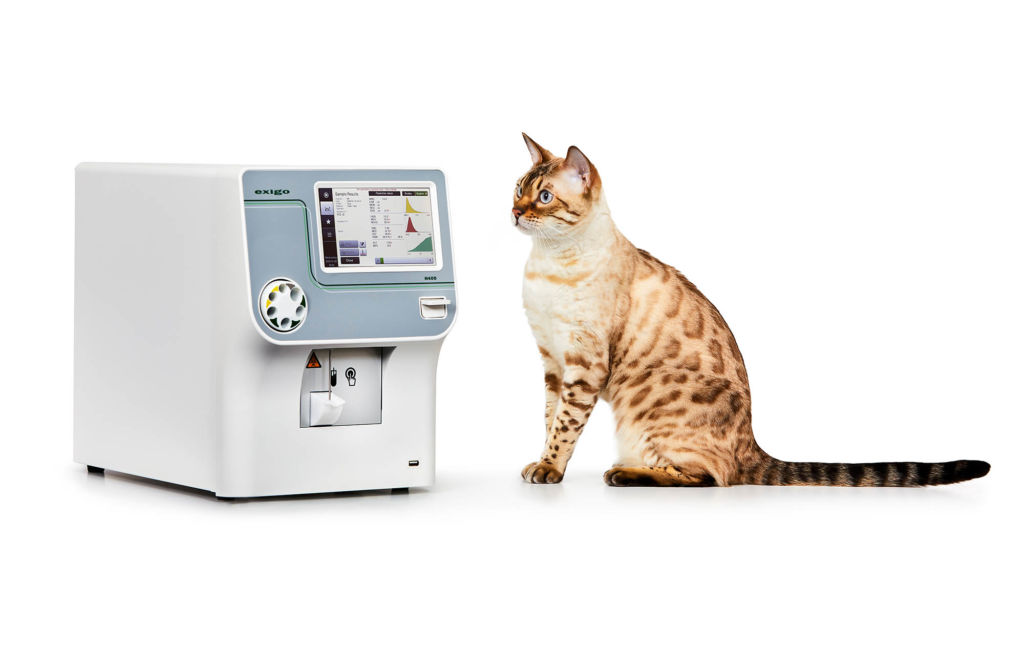In this article, we cover the key indicators to look out for when screening for and diagnosing anemia. We also take a look at how automated hematology solutions like the Exigo™ H400 provide the relevant clinical parameters as efficient and cost-effective anemia screening tools.
Anemia is a very common diagnosis for animals and humans alike. Ranging from chronic anemia that can make animals weak or lethargic to acute anemia that can result in shock and even death, it is essential to find the root cause of the disease as well as to know whether the anemia is regenerative or non-regenerative.
Finding the root cause demands a combination of anamnesis (patient history), physical examinations and clinical examinations such as hematology. Although microscopy is required for specific RBC morphologies, automated hematology analyzers are great screening tools that can provide valuable information. As a result, hematology screening is generally the first step in an anemia investigation, quickly giving the overall hematology view and absolute values of the main cell populations.

Anemia in animals screening: the key indicators
With anemia defined as a too low oxygen-carrying capacity of the red blood cells, the RBC indices are primarily used to diagnose the disease. HCT, MCV, MCH/MCHC and RDW are of particular interest:
-
MCV (Mean cell volume)
Another important indicator, the MCV reflects the mean size of the cells. Immature RBCs, such as reticulocytes, are generally larger than RBCs and their presence increases the MCV. Other important anemia-related MCV findings can be iron deficiency, which can cause microcytosis (lower MCV), or folate and vitamin B12 deficiency causing macrocytosis (higher MCV).
-
MCH (Mean cell hemoglobin) and MCHC (Mean cell hemoglobin concentration)
MCH shows the average content of hemoglobin in each RBC. This usually follows the MCV value but can be elevated by factors such as intravascular hemolysis and lipemia where the HGB count will be falsely increased. It is then important to compare with the MCV, which will not have been affected. An increased MCHC is always an artifact and can be due to interference by Heinz bodies, agglutination or excess EDTA. A lower MCHC can however indicate regenerative anemia or iron-deficiency anemia.
-
RDW (Red blood cell distribution width)
Together with the RBC histogram, the RDW, the variety in RBC size, provides a good indication of if there are reticulocytes present in the blood. If reticulocytes are present, the histogram may become more right-shifted and wider. An increased RDW and wider histogram can also be accompanied by a left shift of the histogram. This is then an indication of microcytosis, which can occur with for instance iron deficiency, where there is a large number of smaller RBCs present in the circulation.
Screening made simple
In the vast majority of cases, 3-, 4- and 5-part hematology analyzers all provide adequate results for the initial screening of anemia. This is true across the instrument types because microscopy is still the next step if abnormal values are obtained. So, the key factor is the ability of the analyzer to detect and flag for abnormal samples. In this regard, the Exigo H400 is a very good tool for general anemia screening.
In addition, without the more sensitive and complex laser-based flow cytometry of a 5-part instrument, 3- and 4-part instruments are typically easier to maintain. With the Exigo H400’s 4-part analysis, you have a valuable screening tool with the benefit of an eosinophil count, but with the greater robustness and lower maintenance costs of an impedance analyzer.
To find out more about anemia screening and the Exigo H400 or simply to discuss your own specific needs in detail, do not hesitate to get in touch. Please contact your local representative or drop us a line.

Note: This article gives a top-level summary of how to screen for anemia using hematology analysis. For more detail — including how these indicators are represented across different animals and breeds — please download our whitepaper: Investigation of veterinary anemia and the role of reticulocytes.




